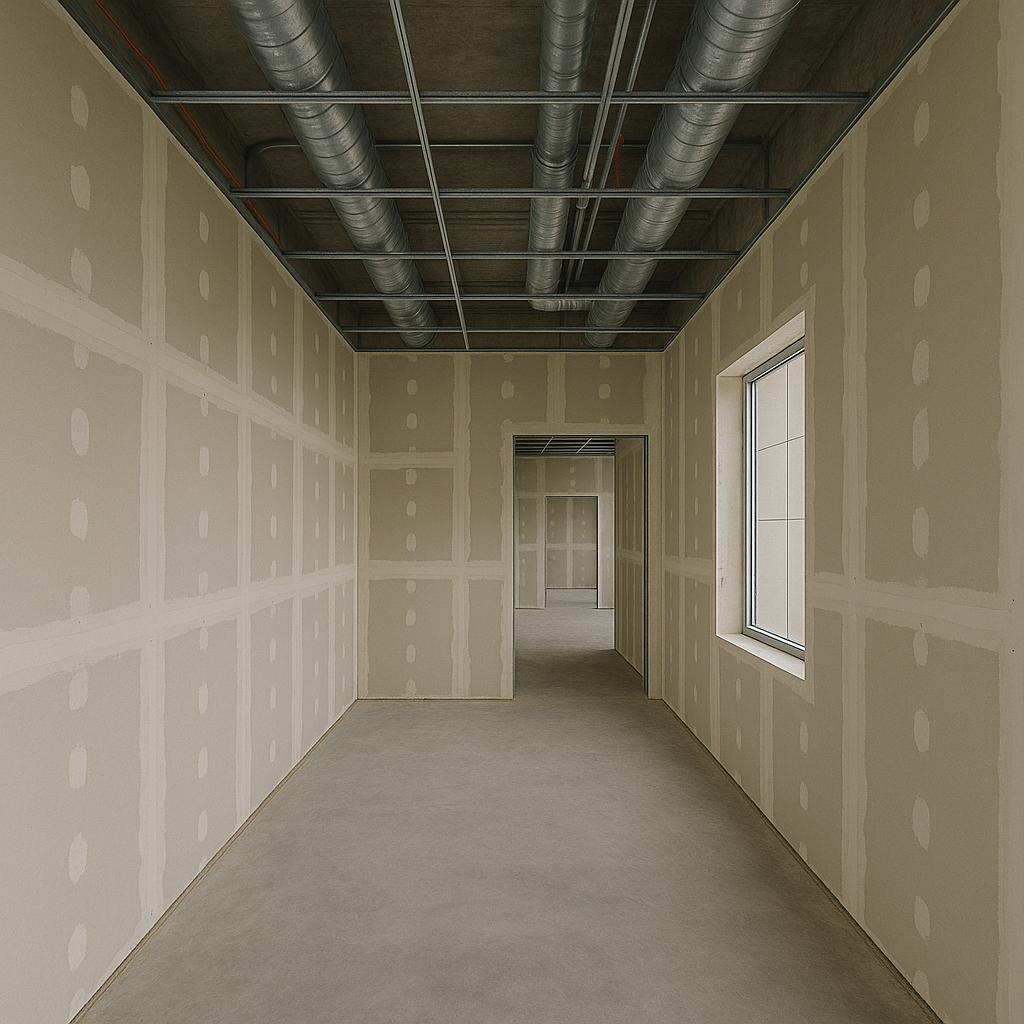
One of the most frequent causes of drywall budget variance stems from MEP-driven wall rework. Mechanical, electrical, and plumbing (MEP) coordination changes often result in modified wall layouts, new penetrations, and unforeseen framing or finish adjustments. If not properly captured and re-estimated, these changes can create a ripple effect that inflates costs and erodes project margins. For architects, engineers, and general contractors, having a consistent method for identifying and incorporating wall rework after MEP updates is essential for accurate cost tracking and project accountability.
Drywall systems are uniquely vulnerable to MEP-driven changes because they serve as the physical interface between building systems and finished space. Common triggers include:
In each of these cases, wall systems must be revised—often after they have already been framed or even boarded. This means not just new labor, but also demo, material waste, and rescheduling impacts.
Wall rework is often underestimated because its scope is difficult to quantify retroactively. Best practices to ensure accurate capture include:
These steps allow estimators and project teams to isolate wall rework costs and clearly communicate them to clients and stakeholders.
Active Estimating offers a unique advantage in capturing wall rework after MEP changes by integrating both objective and subjective cost factors. With side-by-side version control, quantity tracking, and visual model overlays, estimators can pinpoint where scope has shifted—and how it impacts cost projections.
Instead of relying solely on redlines or RFIs, estimators can use drywall estimating software to layer updated MEP data against the latest design model. This reveals changes in wall lengths, heights, penetrations, or conditions that would otherwise be missed in traditional workflows. Importantly, this method not only captures additional work—but ties it to its root cause and provides a visual, auditable record for change order validation.
MEP coordination is fluid—but drywall budgets don’t have to be. By adopting workflows that proactively track and capture wall rework after MEP changes, project teams can close the gap between design shifts and construction costs. With the help of tools like Active Estimating, this process becomes data-driven, transparent, and defensible—helping firms avoid hidden losses and maintain project profitability.
Contact Information:
Active Estimating
508 2nd Street, Suite 208
Davis
California
95616
Rich Schoener
richard@activeestimating.com
(877)
Schedule a personalized demo to see how Active Estimating can work for your specific needs.
